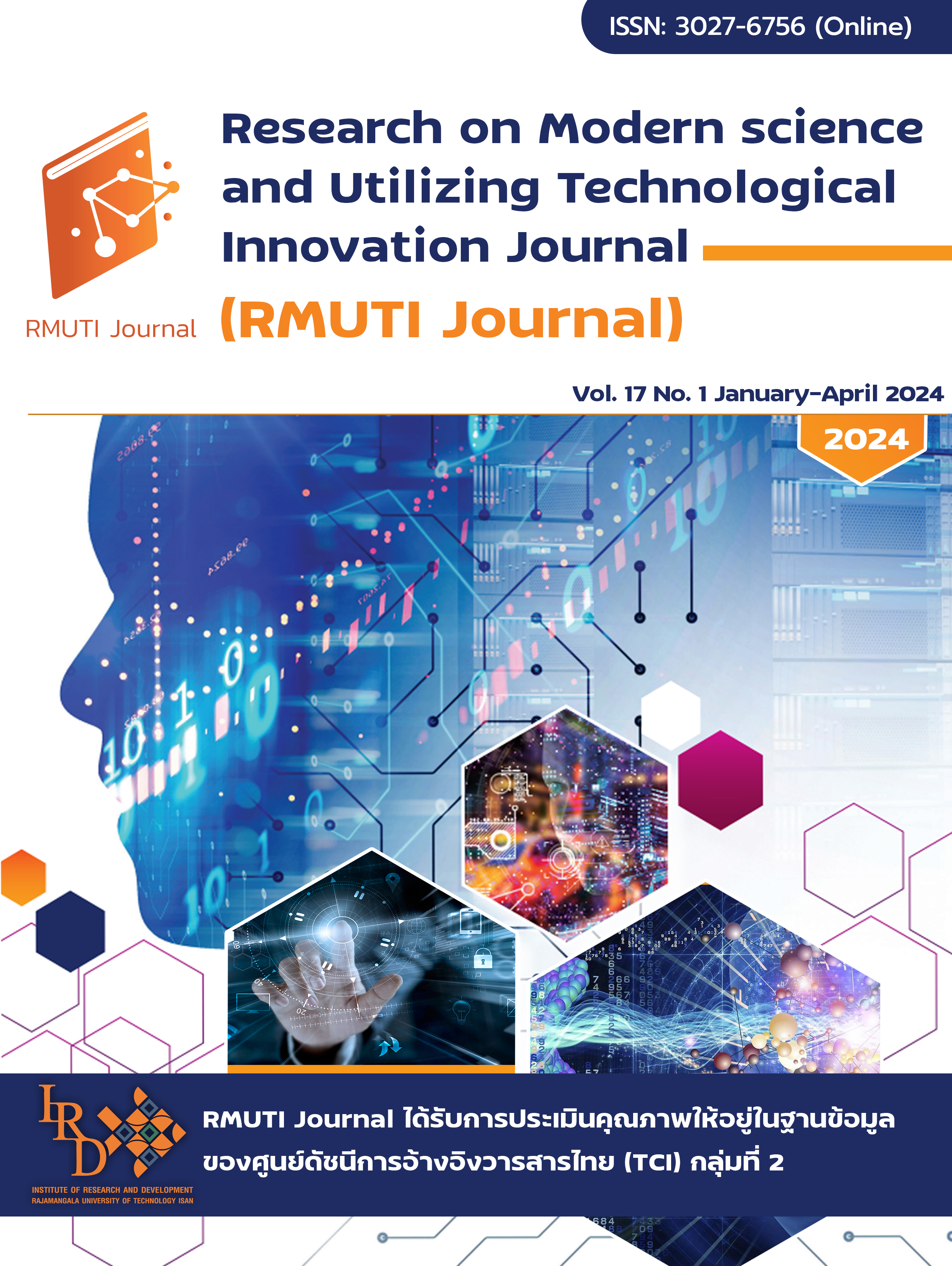The Feasibility of Using Rubberwood Bottom Ash in The Mixture of Interlocking Block
Main Article Content
Abstract
The objective of this research is to evaluate the feasibility of using rubberwood bottom ash in the mixture of interlocking blocks. The mixtures were conducted including cement-to-aggregate ratios of 1:4, 1:5, and 1:6 by weight. The rubberwood bottom ash was used as the aggregate as same as laterite soil with different percentages of 0, 10, 30, and 50 by weight of aggregates. The mixtures were compacted using a manual interlocking molding machine. When comparing the research data with the community product standard 602/2547, which specifies that the ompressive strength of non-load-bearing blocks must be no fewer than 25 kg/cm2, and load-bearing blocks should have a compressive strength of no fewer than 70 kg/cm2, and the water absorption should not exceed 288 kg/m3, it is found that all mixtures met the stand for no-load-bearing blocks. While there were three mixtures met the standard for load-bearing blocks consisting of a ratio of cement to aggregate of 1:4 with 0, 10, 30, and 50 percent of rubberwood bottom ash, a ratio of cement to aggregate of 1:5 with 0 and 10 percent of rubberwood bottom ash, and a ratio of cement to aggregate of 1:6 with 0 percent of rubberwood bottom ash.
Article Details

This work is licensed under a Creative Commons Attribution-NonCommercial-NoDerivatives 4.0 International License.
References
Khamput, P. and Suweero, K. (2013). Prevention of Toxic Sseepage from a Landfill to Groundwater Using Natural Latex. Journal of Community Development and Life Quality. Vol. 1, No. 2, pp. 1-10
Dasaesamoh, A., Maming, J., Radeang, N., and Awae, Y. (2011). Physical Properties and Mechanical Properties of Para Rubber Wood Fly Ash Brick. Journal of Yala Rajabhat University. Vol. 6, No. 1, pp. 25-35
Klathae, T., Sornpakdee, N., Buathongkhue, C., and Deedard, N. (2020). Utilization of Parawood Ash in Concrete Paving Blocks. Rajamangala University of Technology Srivijaya Research Journal. Vol. 12, No. 1, pp. 36-48 (in Thai)
Dasaesamoh, A., Maha, H., and Chebueraheng, H. (2014). Properties of Interlocking Block from Para Rubber Wood Fly Ash Mixed Narathiwat Kaolin. Journal of Research Unit on Science, Technology and Environment for Learning. Vol. 5, No. 2, pp. 202-208
Hanjitsuwan, S., Tho-in, T., and Phoo-ngernkham, T. (2022). Influence of NaOH Concentration and Sand to Binder Ratio on Hybrid Cement Mortar for Filled Materials in Notched Concrete Beam. RMUTI Journal Science and Technology. Vol. 15, No. 1, pp. 1-10 (in Thai)
Ngenprom, N. and Rukzon, S. (2012). Development Laterite Soil Cement Containing Waste Ash from Industrial and Agricultural as Brick Interface. Research Report of Rajamangala University of Technology Phra Nakhon. pp. 41-42
Pangdaeng, S., Ngamtavee, S., Tho-in, T., Hanjitsuwan, S., and Phoo-ngernkham, T. (2022). Mechanical Properties of Fly Ash Geopolymer Concrete Incorporating Clay Residue and Silica Fume. RMUTI JOURNAL Science and Technology. Vol. 15, No. 2, pp. 1-10 (in Thai)
Bubpi, A., Amornpinyo, P., and Teerawong, J. (2022). Comparison of Retaining Walls from Half-Panel Interlocking Bricks with Dry Joints Reinforced with GFRP Material and Stud Steel. RMUTI JOURNAL Science and Technology. Vol. 15, No. 2, pp. 107-117 (in Thai)
Kuasakul, T., Charoennatkul, C., and Lukjan, A. (2017). Engineering Properties of Interlocking Blocks Containing Rubber Wood Ash of a Fishmeal Factory. In The 14th National Kasetsart University Kamphaeng Saen Conference (The 14th KU-KPS) Conference. pp. 384-392
Community Product Standards. (2004). Interlocking Block. pp. 1-3
ASTM (2002). ASTM D 422-63 Standard Test Methods for Particle-size Analysis of Soils.
ASTM (2017). ASTM D 143-94 Standard Test Methods for Specific Gravity of Soil Solids by Water Pycnometer.
ASTM D 2216-98 Standard Test Method for Laboratory Determination of Water (Moisture) Content of Soil and Rock by Mass.
ASTM (2021). ASTM D 1557-02 Standard Test Methods for Laboratory Compaction Characteristics of Soil Using Modified Effort.
Siam cement industry. (2005). Cement and Application. No. 2, p. 243


